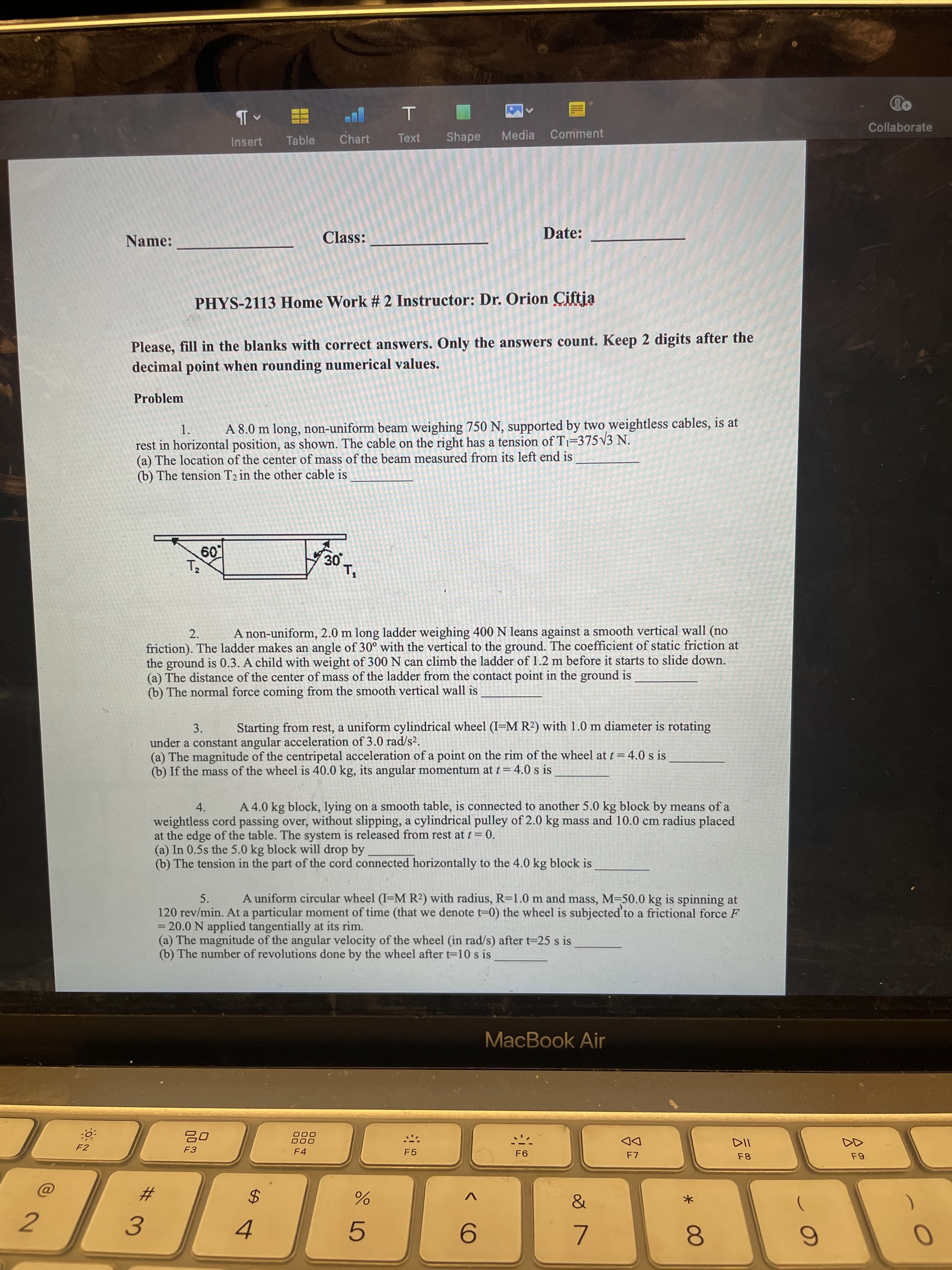2.A non-uniform, 2.0 m long ladder weighing 400 N leans against a smooth vertical wall (no friction). The ladder makes an angle of 30º with the vertical to the ground. The coefficient of static friction at the ground is 0.3. A child with weight of 300 N can climb the ladder of 1.2 m before it starts to slide down. (a) The distance of the center of mass of the ladder from the contact point in the ground is _________ (b) The normal force coming from the smooth vertical wall is _________
2.A non-uniform, 2.0 m long ladder weighing 400 N leans against a smooth vertical wall (no friction). The ladder makes an angle of 30º with the vertical to the ground. The coefficient of static friction at the ground is 0.3. A child with weight of 300 N can climb the ladder of 1.2 m before it starts to slide down.
(a) The distance of the center of mass of the ladder from the contact point in the ground is _________
(b) The normal force coming from the smooth vertical wall is _________
3.Starting from rest, a uniform cylindrical wheel (I=M R2) with 1.0 m diameter is rotating under a constant
(a) The magnitude of the centripetal acceleration of a point on the rim of the wheel at t = 4.0 s is ________
(b) If the mass of the wheel is 40.0 kg, its
4.A 4.0 kg block, lying on a smooth table, is connected to another5.0 kg block by means of a weightless cord passing over, without slipping, a cylindrical pulley of 2.0 kg mass and 10.0 cm radius placed at the edge of the table. The system is released from rest at t = 0.
(a) In 0.5s the 5.0 kg block will drop by _______
(b) The tension in the part of the cord connected horizontally to the 4.0 kg block is ________
5.A uniform circular wheel (I=M R2) with radius, R=1.0 m and mass, M=50.0 kg is spinning at 120 rev/min. At a particular moment of time (that we denote t=0) the wheel is subjected to a frictional force F= 20.0 N applied tangentially at its rim.
(a) The magnitude of the
(b) The number of revolutions done by the wheel after t=10 s is ________

Trending now
This is a popular solution!
Step by step
Solved in 2 steps with 2 images


